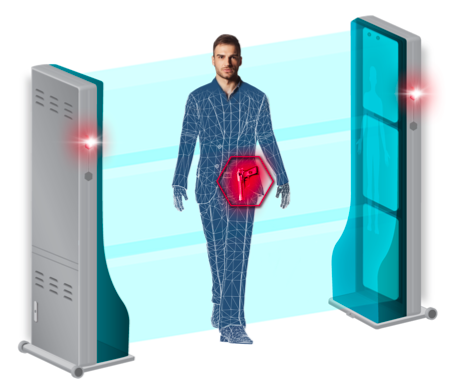Training AI to detect weapons, whether metallic or otherwise, could be the next step to ensuring the safety of the public in crowded areas like sports arenas.
Liberty Defense Technologies, Inc., a security firm from Vancouver, has announced its plans to begin testing just such a technology in a partnership with Vancouver Arena Limited Partnership.
Hexwave, which was developed by MIT Lincoln Laboratory, and exclusively licensed to Liberty Defense, uses 3D imaging and artificial intelligence to assess and detect threats as groups of people pass its sensors.

“There’s really two major elements to the system. It’s the radio frequency that can transmit any part of it and then there’s the artificial intelligence side,” said Bill Riker, chief executive officer for Liberty Defense. “The Hexwave uses a low power radio frequency signal to illuminate the detection space. And then from that energy, which it emits into the space and captures reflection, it captures the signals to create 3D images in real time. These 3D images are then analyzed by machine learning to go ahead and make a determination of whether or not it’s a weapon or if it’s just an anomaly or if it’s a standard item like a cellphone or set of keys.”
After some further testing, which will include providing the technology to those in the security industry to get customer feedback, Liberty Defense is planning to deploy the technology in beta testing in the first quarter of 2020, which will occur at the Rogers Arena in Vancouver.
Riker said this facility was chosen due to the fact that it provides a testing space that is representative of many similar facilities and other facilities that tend to house large masses of the public in a confined area.
“Vancouver’s got a reputation for being very supportive of innovative technologies,” he added.
Hexwave was designed so that it can be discreetly installed behind items like signs, kiosks, or wall panels. Its range is limited to between 6 and 8 feet. Riker says this will ensure that only those entering a surveilled area, which will have signage to indicate it is monitored, will be scanned. And while Hexwave was not designed to include facial recognition, it does allow for security teams to incorporate its own facial recognition capabilities.
